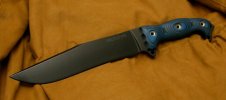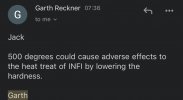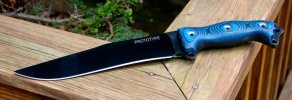Hello all,
I really want a DLC coat for one of my blades; but apparently the temp at which DLC is applied is around 500*F...
So I'm wondering if such high temp can affect the heat treat of INFI negatively; especially INFI made in 2006?
Any official answers would be really appreciated. Thank you great people!
I really want a DLC coat for one of my blades; but apparently the temp at which DLC is applied is around 500*F...
So I'm wondering if such high temp can affect the heat treat of INFI negatively; especially INFI made in 2006?
Any official answers would be really appreciated. Thank you great people!



